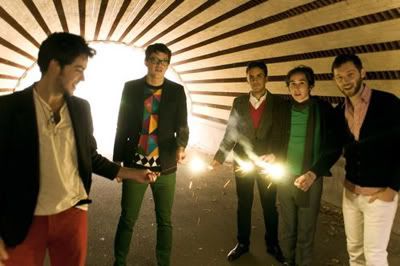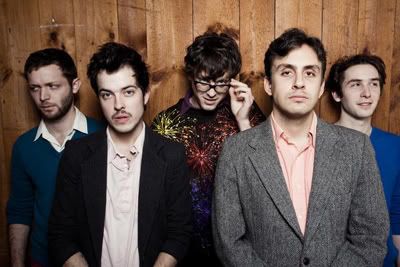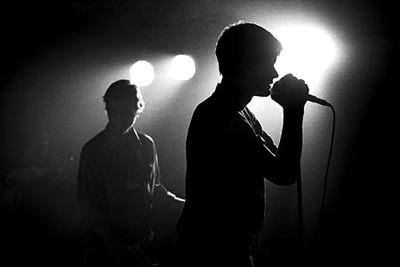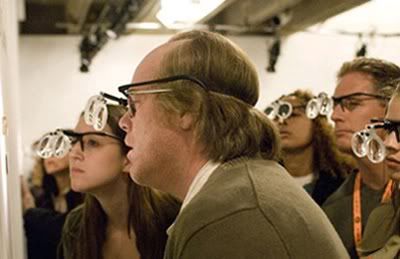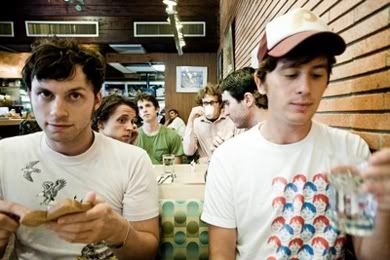
I first saw The Spinto Band perform three years ago with little knowledge of who they were and was instantly charmed by their infectious indie pop. Their live shows glow with ebullient melodies and multi-instrumental harmonies that simply radiate happiness. With six band members, a variety of instruments (including kazoos), and gleeful head-bopping rivaled only by the early Beatles, you'd have to be a real downer or a real music snob not to enjoy yourself at their show.
I spoke to The Spinto Band last week while they were finishing up their tour in Europe before heading down to Austin for SXSW.
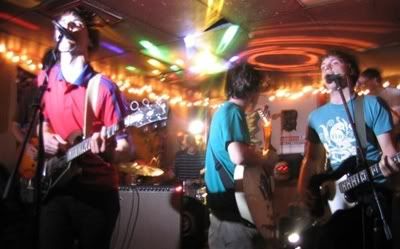
How would you describe your music for those who've never heard it?
Pop Deco.
How is 'Moonwink' different from 'Nice and Nicely Done'? What shaped the writing of the new album?
‘Moonwink’ is a bit denser than 'Nice and Nicely Done'. It's tricky pop music with a high replay-value. I think the writing stemmed from the fact that we have six members in the band and attempting to create intricate arrangements that took advantage of that fact.
How is the European tour? How are crowds there different from those stateside?
The European crowds have been very generous. German crowds, especially. When we perform, they shake like people at a high-school dance on a film set in the 1950s.
Your music and shows are just about the happiest I've ever experienced. Is this just your style or are you guys just the happiest people in music?
We've been playing around with the music program, Microsoft Songsmith, and it only has two sliders to affect the feel of the music. They are "happy" and "jazzy". On a purely superficial level, I think our music would be on the higher end of both of those knobs. I think on a personal level, we're all realists with a pinch of optimism.
I saw you guys play a few years ago with Art Brut and We are Scientists. How was that tour and do you guys have any favorite bands that you've played with?
We were talking about that tour the other day and how great it was...Honestly. If we gave awards for touring, that may win the best tour for bro-hanging.
Greatest influences outside of music?
Iron Chef Morimoto, Stanley Kubrick, 2008 Philadelphia Phillies, El Chupacabra, Josef Albers, Theodore Roosevelt.
Favorite activities to do on tour?
Challenge people of different cities and nationalities to bowling competitions. Also we like to sample the local cuisine, mainly local sodas, beer, and potato chips.
Most rock 'n roll moment you've ever experienced?
Four out of six of us puking within hours of each other. Not to mention our tour manager, who also puked.
What are you most excited about for SXSW?
Free stuff.
Are you guys still making films? Ever considered coming to SXSW showcasing both film and music?
We still make videos often for our YouTube channel, but we can't imagine being at SXSW any longer than a weekend. Our bodies couldn't handle it.
Will we ever hear any kazoo harmonies from you again?
Some fans just restocked our kazoo collection with hand-decorated kazoos, so that's a maybe!
The Spinto Band play official SXSW showcases at SESAC Day Stage Café Austin Convention Center and Room 710 on Saturday, March 21 as well as free parties at Home Slice Pizza and Red House Pizzeria. Check spintoband.com for shows.
